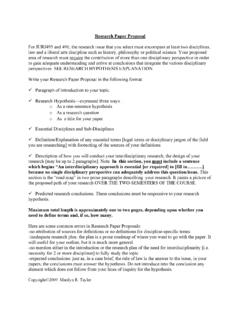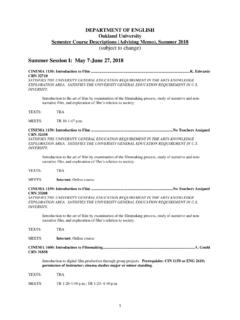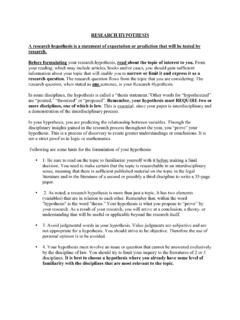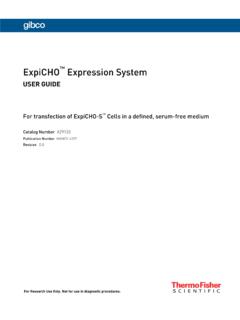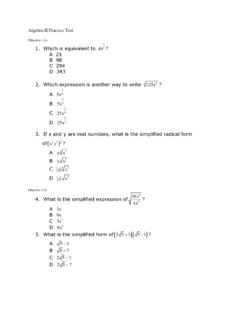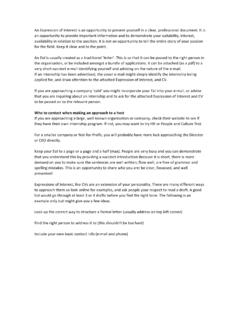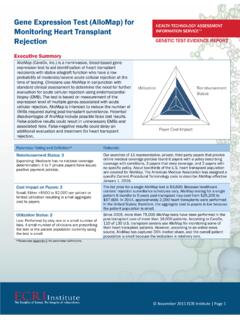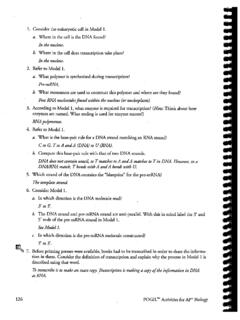Transcription of ACTION & EXPRESSION: Universal Design for Learning …
1 ACTION & expression : Universal Design for Learning PrincipleThe Center for Excellence in Teaching and Learning Quick NotesDeveloped by Amanda Nichols Hess, Christina Moore, and Judy Ableser, CETL, Oakland University. Page 1 of 2 Universal Design for Learning (or UDL) is a way to improve and optimize teaching and Learning for all people based on scientific insights into how humans learn (CAST, 2015). UDL considers the why, what and how of students Learning . One way to integrate Universal Design principles into your classroom is to provide learners with multiple means of ACTION & expression . This particular approach focuses on offering learners diverse ways to express their understanding and skill development as a result of course experiences.
2 By providing a number of ways for learners to demonstrate their new knowledge, you can help them to more fully attain course Create materials that allowlearners to interact with the contentat their own paces ( rewind, fast forward, pause). Use video content through OU Libraries, other educational repositories, or freely available online that students can control playback speed. Supplement any video content with text content ( transcript, captions). Include section breaks during long breaks, or indicate stopping points if students need a means of ACTION and expression can help different groups of learners in different ways without watering down Learning outcomes. Not every strategy will work in every classroom, or for every subject area find the ones that you are comfortable withand that work for your discipline and STRATEGIES2.
3 Build opportunities for learnersto communicate their knowledge ina variety of formats whereappropriate and relevant. Create tasks that can be done in writing or through presentation ( in-class/online presentations). Supplement writing assignments with presentation-based tasks where students can demonstrate Learning through speaking. Allow students to pre-record presentations so they can refine their Provide learners with many examples of ways to solve problemsor address issues with real-life andacademic examples. Begin or end class sessions with instances of disciplinary knowledge being used to solve real issues. Pose problems to student and ask them to identify innovative ways others have solved them. Share how you apply your disciplinary knowledge in authentic situations, or ask students to write or speak about their experiences with course content outsideof the Give feedback in differentformats.
4 Use free screen capture tools like Jing ( ) or Screencast-o-matic( ) for screen-and audio-recorded feedback. Use free tools, like Audacity ( ), to give audio feedback. Offer synchronous sessions through WebEx in Moodle to meet with students to discuss Provide graphic organizers or templates that learners can use to organize course content and information. Use templates provided through free websites ( ) to build graphic organizers for students to use as they work toward course outcomes. Share anonymized student work (with permission) to illustrate task / course outcomes. Scaffold student tasks at course outset and gradually remove this support as the course impairedstudents with anxietycognitively impairedEnglish language learnersextrovertsintrovertsinternationa l studentsnon-proficient readersnon-traditional studentsunder-achieving studentsvisually impaired1.
5 Use online discussion tools. students create mind maps to structure understanding. 3. Give time/effort/difficulty estimates. 4. Reiterate objectives and outcomes and connect activities to these Learning goals. 5. Prompt students to "stop and think" or "show and explain." 6. Use technology that is compatible with screen readers. 7. Share alternative keyboard options. 8. Allowstudents to use technology tools (text-to-speech software, translation tools). Other UDL practices that are especially helpful to learner groups often challenged by traditional classroom Pose questions to learners that ask them to reflect and self-monitor progress. Ask students to reflect on their Learning at the end of each class ( exit slip, feedback form).
6 At key points, prompt students to consider how they ve met the course outcomes. Create a task that asks students to regularly reflect on their Learning , such as a reflection Share checklists and guides for note-taking with learners. Provide lecture outlines in advance of or after class sessions so students can review content. Build note-taking abilities by providing students with progressively less-structured note guides. Share note-taking methods, such as Cornell Notes for effective note-taking ( ).Developed by Amanda Nichols Hess, Christina Moore, and Judy Ableser, CETL, Oakland University. Page 2 of 2 The Center for Excellence in Teaching and Learning Quick Notes8. Assess student work using checklists and scoring rubrics, and share examples of annotated student work with learners.
7 Create scoring rubrics that students can use to work toward course outcomes. Align course outcomes with all categories on task rubrics or checklists. Offer anonymous examples of past students work (with permission), and highlight successful work toward course the National Center on UDL, 2014 Broader principles from: National Center on Universal Design . (2014). Principle 2: Provide multiple means of ACTION and expression . Retrieved from
